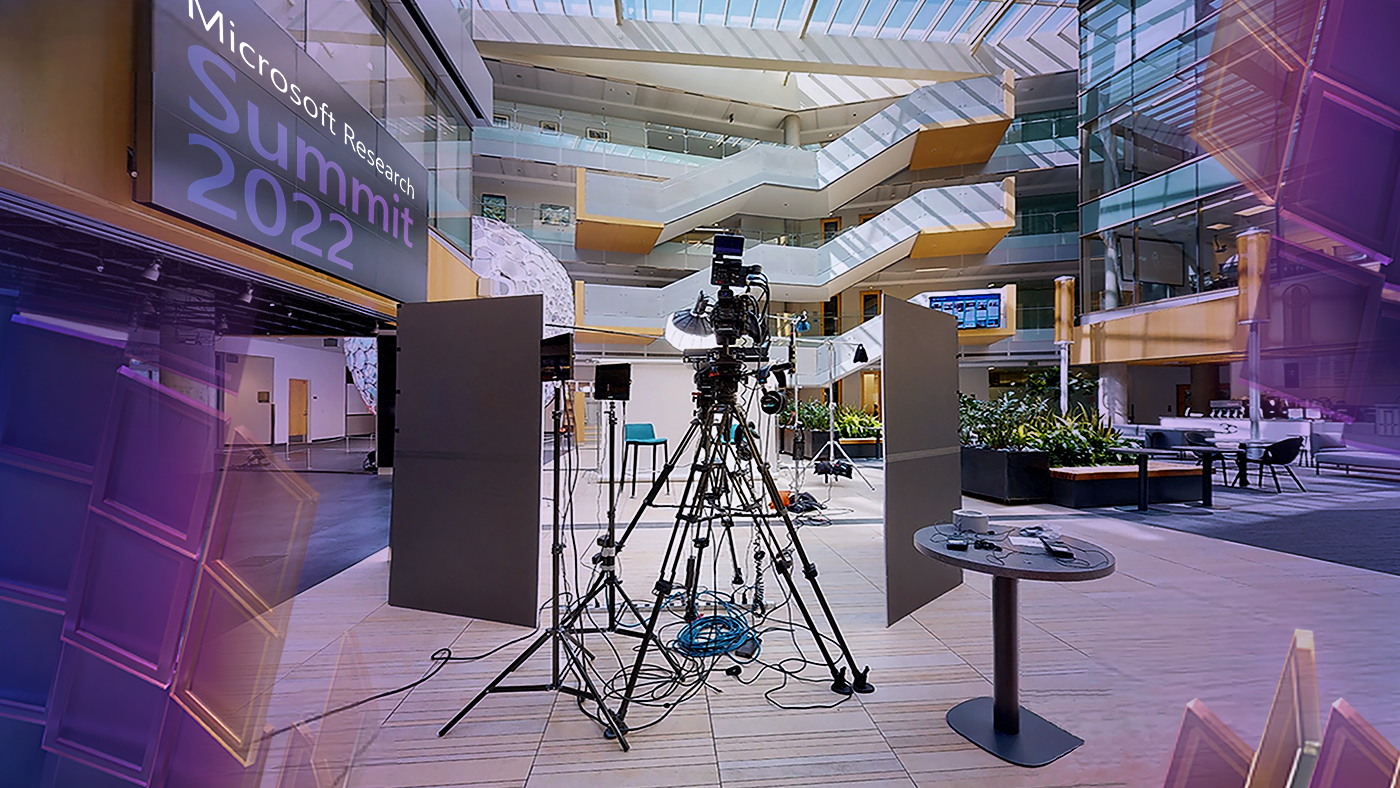Posted by

Hsiao Wuen-Hon, corporate vice president in charge of Microsoft Research Asia, demonstrates XiaoIce at the 21st Century Computing Conference in Beijing.
When most people use automated speech recognition technology today, it’s because they have a task that needs to get done: A person to call, directions to get, a quick text to send.
Spotlight: AI-POWERED EXPERIENCE
In China, millions of people are using this type of natural language processing in a much more human way: To carry on a casual conversation with a Microsoft technology called XiaoIce (opens in new tab).
Hsiao-Wuen Hon (opens in new tab), corporate vice president in charge of Microsoft Research Asia, sees XiaoIce as an example of the vast possibility that artificial intelligence holds — not to replace human tasks and experiences, but rather to augment them. This way in which advanced technology is increasingly being used to create very human experiences is just beginning, he noted.
“We’ve just barely scratched the surface,” he said.
Hon recently joined some of the world’s leading computer scientists at the 21st Century Computing Conference (opens in new tab) in Beijing, an annual meeting of researchers and computer science students, to discuss some of these emerging trends.
Microsoft Research Asia has been hosting the conference since 1999, as a way to give young and promising computer scientists in Asia Pacific the opportunity to meet and talk with some of the world’s most renowned computer scientists. This year alone, the conference included two Turing Award winners.
Artificial intelligence (opens in new tab) was one of the hottest topics at the conference, because of the recent, major advances in these technologies that can see, hear, speak and even understand. It’s also one of the primary focuses of Microsoft’s research lab in China, where more than 230 researchers are doing cutting-edge research in areas including natural user interfaces and next-generation multimedia.
The lab’s researchers have contributed key elements of many products that consumers use today, including the real-time translation tool Skype Translator (opens in new tab) and products such as Windows, Office, Bing, Xbox, Kinect and Windows Phone, in collaboration with other Microsoft research labs and groups.
Peter Lee (opens in new tab), the Microsoft corporate vice president whose responsibilities include overseeing Microsoft Research Asia, said efforts like Skype Translator have been part of Microsoft Research’s strategy of aligning research around a specific goal they want to accomplish.
“How can we eliminate the language barrier for all people on the Internet, by using Skype? That’s a goal and it’s very, very exciting,” he said.
Big bets and concrete accomplishments
The Asia lab’s researchers also are looking much further into the future, at tools that may seem outlandish today but that we could take for granted in years to come.
Lee noted that it is both important and alluring to do research that goes directly into products consumers use immediately, such as Skype Translator. But, he said, a research lab also needs to be thinking about bigger, bolder bets that may not pay off immediately but could change the world in the future.

Peter Lee, corporate vice president for Microsoft Research, discusses the future of computing at the 21st Century Computing Conference in Beijing.
He noted that many of the world’s most important technological innovations, including the personal computer and the transistor, came out of corporate research labs. One challenge is that people don’t always immediately recognize how important an innovation is, and only see its importance a few years down the line.
“Sometimes I wonder if Microsoft Research has already invented the idea that will change the world, but we just don’t know it yet,” he told journalists at the 21st Century Computing Conference.
A more personalized search engine
That’s why researchers at the Asia lab are looking at both near- and long-term implications of the work they are doing.
Take XiaoIce, for example. The fact that so many Chinese people like to talk to her – about their day at work, the weather or current events – makes Hon think that, in the future, speech recognition technology could be used to make all sorts of tools more personalized and more human.
Think of a search engine that worked more like XiaoIce. Instead of just typing a phrase into a box, Hon envisions a world in which the search engine is more like a personal assistant you have a conversation with.
“The search engine could change into more like your chatting buddy,” Hon said.
The buddy would do research for you and offer opinions, and it would be human-like in other ways as well, he said. For example, the chatbot could remember your search chat for the next few days and send you additional information as it becomes available.
And, just like most people have many human contacts with different areas of expertise, you might have multiple chatbots who are experts in various topics, like medicine, cooking or hiking. You also might choose to take the chatbot’s advice, or ignore it and seek out another chatbot for additional perspectives.
An invisible revolution
The advances in speech recognition and natural language processing are part of what Harry Shum (opens in new tab), Microsoft’s executive vice president in charge of technology and research, calls the “invisible revolution (opens in new tab)” in technological progress.
Until now, many of the biggest leaps in technology have come from faster computers and better gadgets. But in the coming years, Shum says, many of those new discoveries will instead come from tools that you use but don’t necessarily see. Those include cloud computing systems that can analyze vast amounts of data in a just a few minutes and productivity tools that can use machine learning (opens in new tab), in which systems get smarter as they amass more data, to better understand and anticipate people’s needs.
In China, Hon said he’s already seeing that revolution take place with tools such as face recognition technology (opens in new tab).
Researchers and other Microsoft employees in China recently partnered with a leading non-governmental organization (opens in new tab) to use face recognition technology to help locate missing children. The Photo Missing Children project uses face recognition technology from a suite of tools called Project Oxford (opens in new tab) to help the organization recognize and find children.
Hon expects to see many more of these types of tools in years to come, and he said those will come more quickly because of recent, major advances in artificial intelligence and the related fields of machine learning and big data analysis.
Thanks to these tools, researchers can now analyze larger amounts of data much more quickly, and then use that data to train systems to do complex tasks. That will help everyone from company executives who want to better understand sales trends to teenagers who want to accurately dictate texts in loud rooms.
“Why are artificial intelligence and machine learning and big data so exciting?” Hon asked. “Because it touches everything we do.”
Related:
- The future of artificial intelligence: Myths, realities and aspirations (opens in new tab)
- The next evolution of machine learning: Machine teaching (opens in new tab)
- Microsoft’s Project Oxford helps developers build more intelligent apps (opens in new tab)
- Leslie Lamport at the 2015 21st Century Computing Conference (opens in new tab)
- Michael Stonebraker at the 2015 21st Century Computing Conference (opens in new tab)
Allison Linn is a senior writer at Microsoft Research. Follow Allison on Twitter (opens in new tab).





